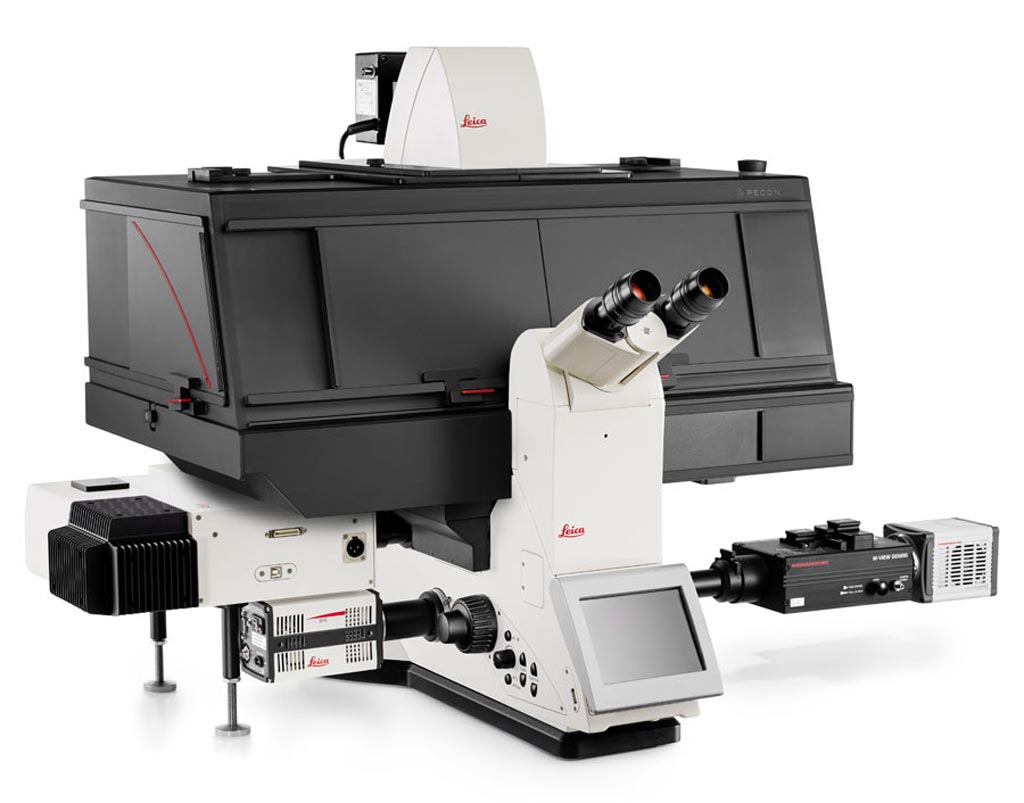New System Enables Multi-Color Resolution in Cells
By LabMedica International staff writers
Posted on 05 Jun 2017
A powerful microscope imaging system provides five times more speed and an increased viewing area up to 10,000 times, which can be combined with a new photomanipulation scanner to activate, ablate, and bleach cells or molecules within one experiment.Posted on 05 Jun 2017
The Leica (Wetzler, Germany) DMi8 S imaging system was launched at the 17th International European Light Microscopy Initiative Meeting (ELMI) that was held in Dubrovnik, Croatia, May 23-26, 2017.

Image: The Leica DMi8 S imaging system (Photo courtesy of Leica Microsystems).
The imaging system is based on the DMi8 modular research microscope. This advanced instrument is fully configurable with manual or motorized accessories, and the system can be adapted or upgraded at any time. The Leica DMi8 was designed with flexibility in mind. With up to two Infinity Ports providing access points for addition of fluorescent devices, the microscope is easily adaptable for applications ranging from simple fluorescent imaging to sophisticated super resolution techniques. This novel design facilitates the integration of additional fluorescence light sources and laser systems for advanced applications like FRAP (fluorescence recovery after photobleaching), photo-switching, ablation, optogenetics, and more.
With the highly flexible Infinity TIRF (total internal reflection fluorescence) module, researchers can produce simultaneous multicolor illumination, and by employing the high power illumination option, perform super resolution applications. These options enable the researcher to achieve multi-color single molecule resolution at the cell surface to resolve structures involved in receptor trafficking, synaptic organization, or cell adhesion. With the high-powered lasers option, it is possible to image and analyze samples down to a resolution of 20 nanometers.
“Live-cell imaging is the future in discoveries. Gaining insight on dynamic processes is key to understand the mechanisms, potential treatments, and prevention of human diseases,” said Markus Lusser, president of Leica Microsystems. “These new DMi8 S developments have far reaching utility. Whether studying neuroscience, cancer, or immunology, researchers can use the DMi8 S to get elusive answers to their questions and find the links to our complex biology.”













